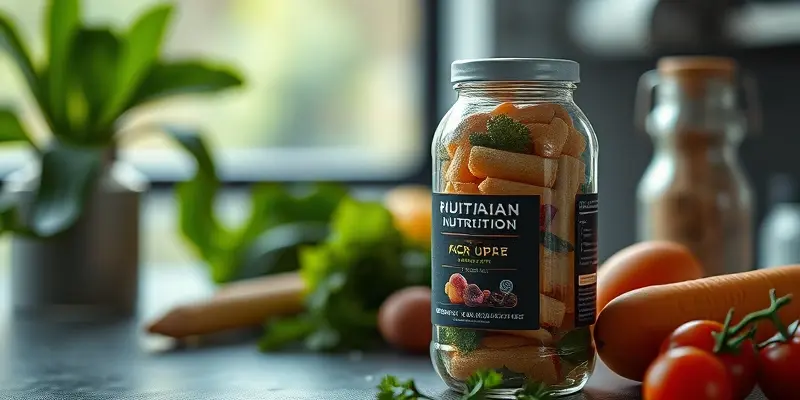Introduction to Flexitarian Nutrition for Athletes
Ever wondered if there’s a way to have the muscle-building benefits of animal protein and the inflammation-fighting power of plants? Welcome to the flexitarian approach—a balanced, flexible diet combining the best of both worlds. As a sports performance coach and nutrition expert, I’ve seen firsthand how this strategy helps everyone, from weekend warriors to competitive athletes, stay strong, recover faster, and enjoy training for life.
How Flexitarian Nutrition Supports Injury Prevention
The Science Behind Flexitarian Fuel
Injury prevention starts long before a pulled hamstring or twisted ankle. Flexitarian nutrition packs your plate with antioxidants, vitamins, and minerals—found in leafy greens, berries, whole grains, and nuts—while still supplying muscle-supporting protein from fish, eggs, and dairy.
- Why does this matter?
Nutrients like vitamin C and E, magnesium, and omega-3s help fight inflammation and support tissue repair, reducing your risk of strains, sprains, and stress fractures.
Everyday Strategies for Staying Injury-Free
- Mix your proteins: Rotate between chicken, eggs, beans, and legumes for balanced amino acids.
- Don’t skip the greens: Add spinach or kale to meals for iron and magnesium.
- Stay bone-strong: Combine dairy (yogurt, cheese) and fortified plant milks for calcium and vitamin D.
Tip: If you’re used to meat-heavy meals, try swapping in a chickpea stir-fry or Greek yogurt bowl a few times a week.
Flexitarian Recovery Toolbox: Speed Up Your Healing Process
Simple Meal Planning for Fast Recovery
Whether you’re bouncing back from a tough game or working through rehab, recovery nutrition matters. A flexitarian plate makes it easy:
- Protein for muscle repair: Think eggs, cottage cheese, tofu, or salmon.
- Vitamin C for collagen: Citrus fruits, berries, and bell peppers.
- Magnesium to relax muscles: Pumpkin seeds, quinoa, and spinach.
- Omega-3s for inflammation: Walnuts, chia seeds, sardines, or trout.
Sample Recovery Meal:
- Grilled salmon with quinoa and broccoli
- Greek yogurt with strawberries and chia seeds
Snack Ideas:
- Boiled eggs and carrot sticks
- Apple slices with almond butter
Focus on Consistency
Eating these foods regularly ensures your body gets the nutrients needed to rebuild, not just when you’re injured, but for everyday resilience.
Beyond the Plate: Tools & Motivation During Rehabilitation
Essential Gadgets for Recovery
- Foam rollers and massage guns: Boost circulation and reduce soreness. Learn more about the foam roller benefits and how using a massage gun therapy can accelerate your recovery.
- Nutrition tracking apps: Keep you on top of protein and micronutrient targets.
- Wearable trackers: Monitor sleep and recovery to support your training schedule.
Motivation & Mindset
Staying positive during recovery is just as crucial as proper nutrition. Set small, achievable goals—maybe it’s flexing a muscle a bit more each week, or cooking one new flexitarian meal. And remember, support is key: connect with teammates, coaches, or online groups to stay inspired.
Flexitarian Success Stories in Athletic Recovery
Take Alex, an amateur runner who switched to a flexitarian diet after a stress fracture. By emphasizing protein from eggs, adding berries for antioxidants, and incorporating salmon twice weekly, Alex cut his recovery time and returned to the starting line feeling stronger and more energetic than before. His story highlights that making small, flexible shifts pays off, no matter your sport or level.
Conclusion: Why Flexitarian Makes Sense for Lifelong Fitness
Flexitarian sports nutrition is a practical, science-backed strategy for preventing injuries and accelerating recovery. By mixing plant and animal foods, you cover all the nutrient bases, keep meals exciting, and make room for your favorite dishes. If you want to build lasting resilience and enjoy your active lifestyle without long downtimes, giving flexitarian eating a try might just be your game-changer.
Ready to make your recovery smarter? Start with one flexitarian meal this week—and see how your body responds. For tailored advice, consult a sports dietitian. Here’s to stronger, healthier training for life!
Written by GymPulse Lead Coach (over 10 years’ experience in sports nutrition, training, and performance)

